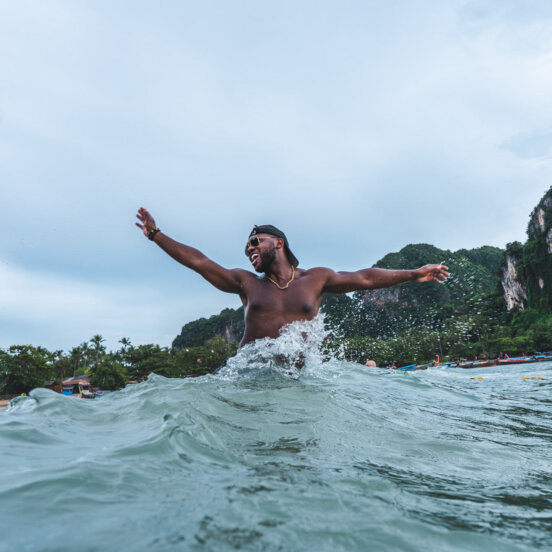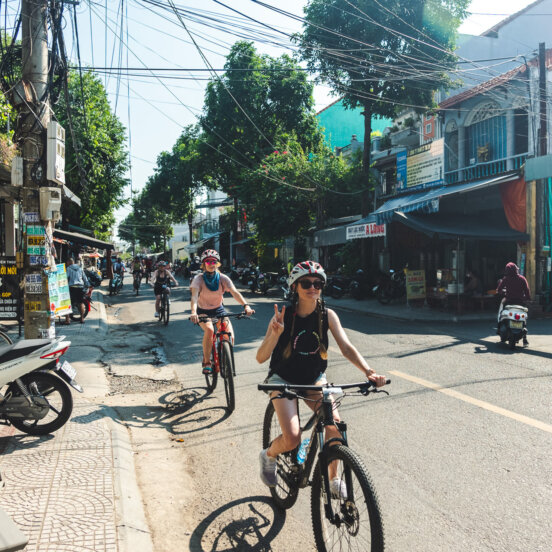The ultimate solo travel guide to Japan: Everything you need to know
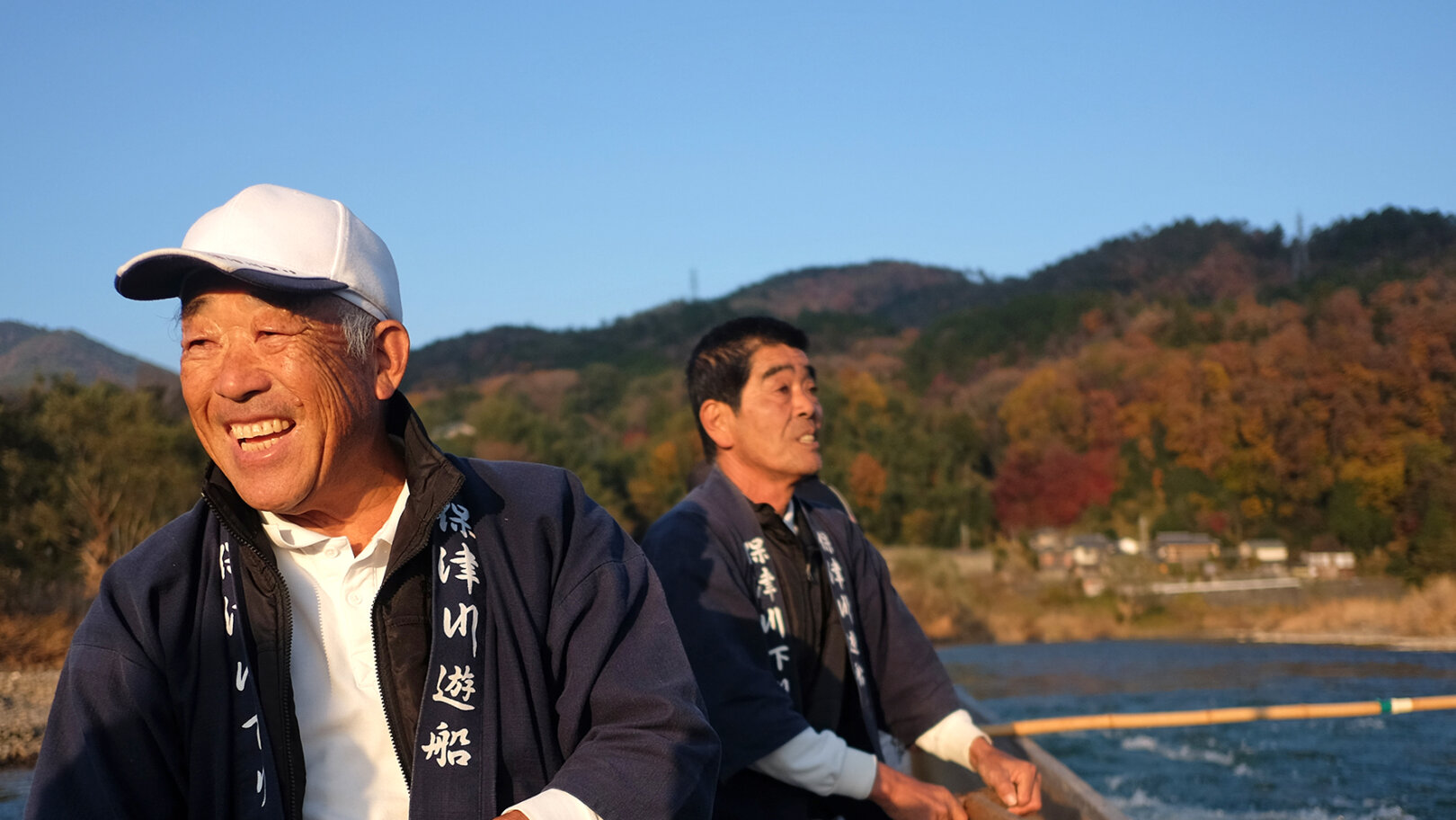
With its glorious tapestry of remote mountain temples and thriving cityscapes, Japan hits the sweet spot on many a travel bucket list. From rich cultural traditions to dazzling cuisine (give us a fiery miso ramen, any day), this is a country that was made to surprise your senses, making a solo trip to Japan a great option for anyone looking to try travelling alone. Even the travel-weary can’t fail to be charmed by Japan’s fusion of beautiful landscapes and hi-tech hubs that buzz with colour and energy.
Indeed, spending time solo is pretty well ingrained and normalised in Japan. Counterside tables for one are part of the furniture in any restaurant or cafe. But language barriers and cultural nuances can, at times, be hard to navigate entirely alone, so joining a group tour with other like-minded solo travellers, like on Flash Pack’s Japan: Another World itinerary, can give you that balance of self-sufficient solitude, while taking the hassle out of planning and ensuring those all important bucket list moments are all carefully curated for you. Here’s everything you need to know about group solo travel to Japan.
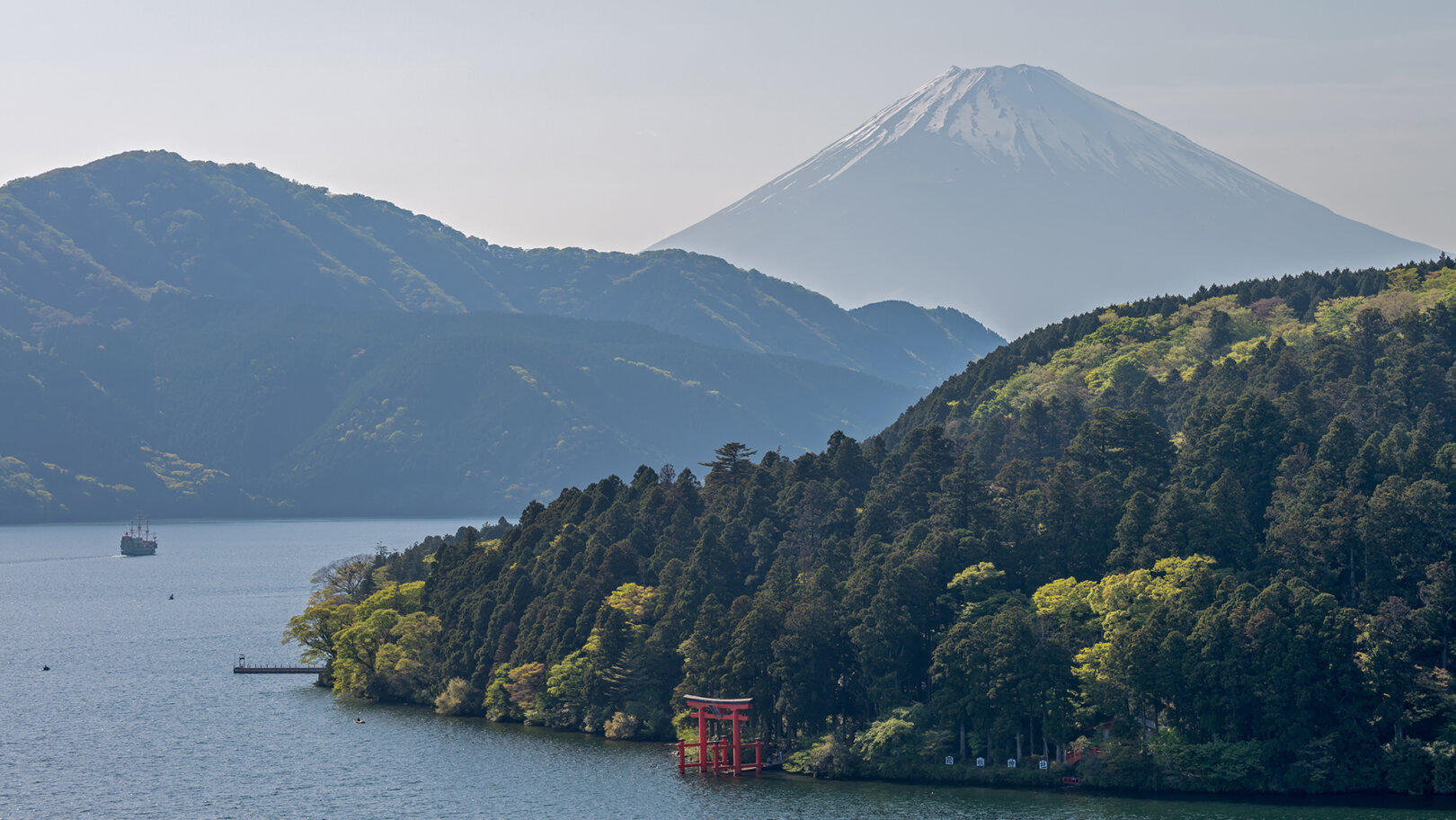
Japan travel facts
While its cities often take the spotlight, 70% of Japan is made up of forest and mountains. There’s over 100 active volcanoes, with its tallest mountain, Mount Fuji, peaking at 3,776 feet. Throughout this island nation, there are also 25 Unesco World Heritage Sites – 20 of which are cultural (like Himeji Castle) and five are natural (like Shiretoko National Park). It’s not all just happening on the main island of Honshu, either; Japan has nearly 7,000 islands to hop around, making it the fourth-largest archipelago in the world. Choose the small island of Ōkunoshima for its population of rabbits (yes, really), or Hokkaido for fresh powder and off-piste skiing in winter.
Is Japan good for solo travel?
Solo travel in Japan is safe and it’s easy to get around thanks to the country’s excellent transport links. It’s also a place where being alone is celebrated. In some countries, you may feel out of place if you go out to eat or drink solo, but not in Japan. It’s so normalised that it’s incorporated into the language: the term ohitorisama (which roughly translates as “party for one”) refers to people living and doing things alone, often reverently so.
Meanwhile, the Japan National Tourism Organisation operates a 24-hour English-speaking helpline that is particularly helpful for solo travellers, providing a great resource of tourism information and help. Want to ease yourself into the experience? Take a look at Flash Pack’s Japan trip for solo travellers, offering 12 days of adventure in the company of a small group of like-minded people.
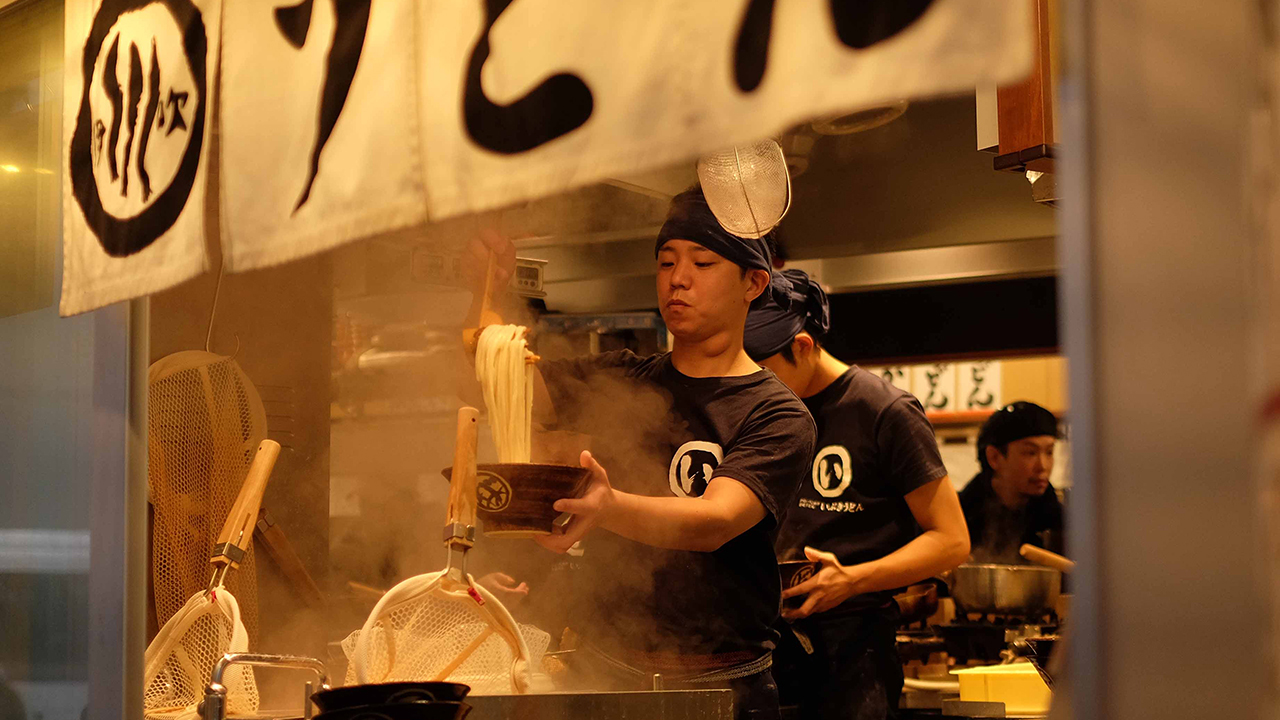
Best places to visit in Japan
Head to one of Japan’s tachinomi (standing bars) to try out kushikatsu (bamboo skewers of deep-fried meat and vegetables), along with delicious edamame and draft beer or sake. Other great street food to try includes okonomiyaki (savoury pancakes filled with grilled squid or pork) and takoyaki (fried octopus-stuffed dumplings). You’re likely to eat your body weight in kitsune udon (Japan’s beloved noodle broth), but for something a little different, try a kappo restaurant – for high-end, multi-course dining, without the formality of its kaiseki cousin.
On a solo holiday to Japan, outdoor pursuits, such as hiking along the Old Hakone Highway, or forest bathing in the bamboo trails of Arashiyama, allow a chance to unwind and appreciate Japan’s spectacular natural landscapes. Onsen hot springs, especially those that are found in remote mountain settings, are a delight. On the other end of the scale, you have the cities: who could resist the neon-bright lights of Osaka by night, or the cafes and ateliers of Tokyo’s arty Nakameguro district?
Finally, Japan is steeped in culture, and its ancient sights are not to be missed: make a beeline for the Great Torii floating shrine on the scenic island of Miyajima, along with the iconic red gates of Fushimi Inari shrine. Kyoto – Japan’s cultural capital – is a treasure trove of photogenic temples and lantern-lit streets.
Where to stay as a solo traveller in Japan
What are the hotels like in Japan? There’s a huge range to choose from on a solo holiday. Whether you’re looking for a boutique city retreat, a futuristic skyscraper or a rustic countryside guesthouse, this is a place that has it all. You’ll find everything from centuries-old rural ryokans with tatami-matt floors, onsite onsen and multi-course kaiseki meals to high-tech hotels in Tokyo. As a solo traveller, you’ll have more flexibility than most, but it’s still worth booking well in advance. Japanese hotels book up fast, especially in the cities and during peak seasons. On a group tour with Flash Pack, you bypass any hotel hassle and typically share a room with another like-minded solo traveller, thereby serving the single supplement. Still want a room of your own? That’s no problem, too.
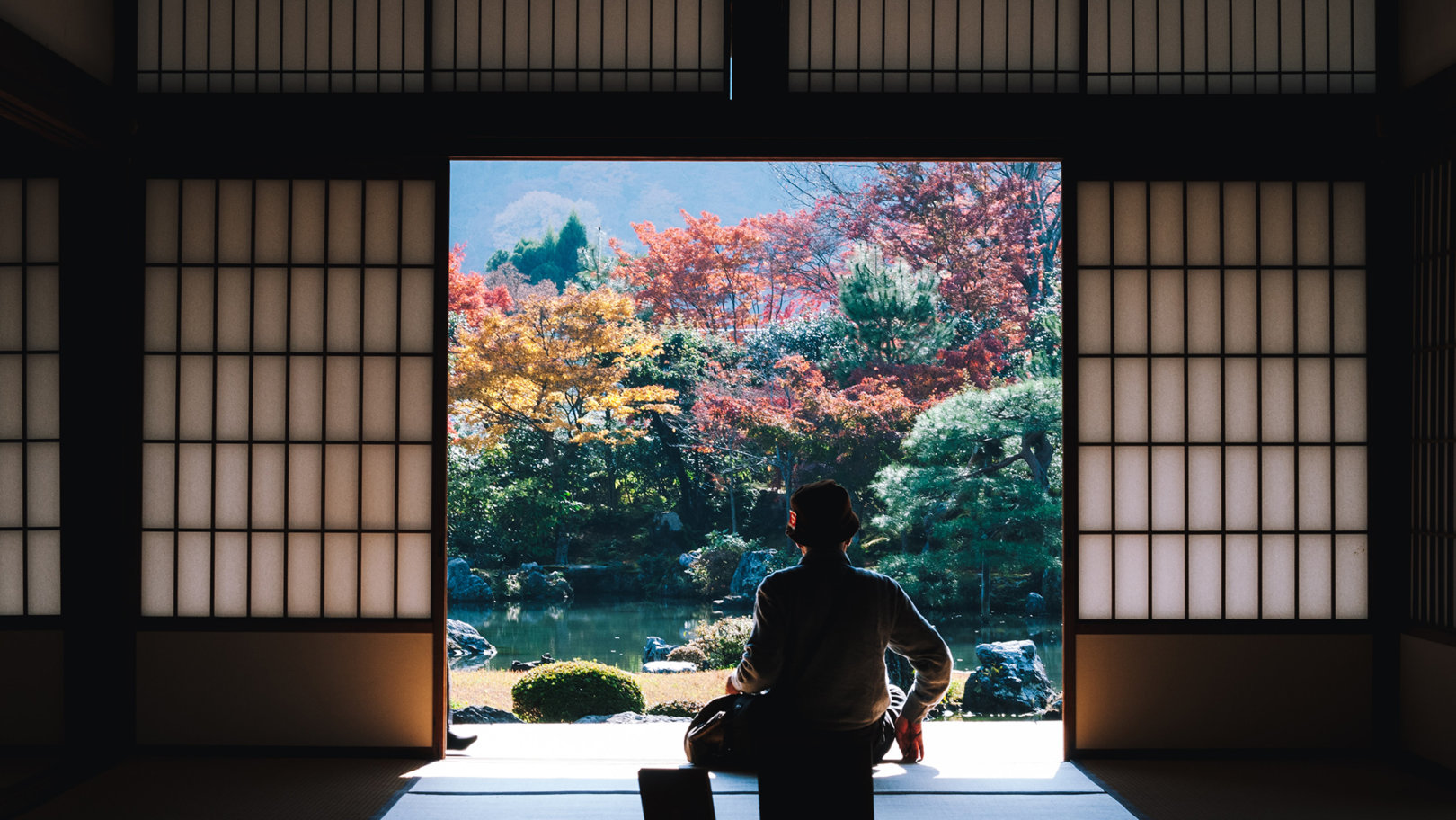
How to get to Japan
The simplest way to kick off your Japan solo travel experience is by flying. A number of airlines (including Japan’s ANA and Nippon Airways) fly nonstop from destinations, including the US, Canada and the UK to Osaka, Tokyo and Nagoya, all on Honshu island.
Another option is by ferry with Japan being accessible by sea. The main routes go from China and Korea, docking up in Osaka and nearby Kobe. Japan is an island country, but there’s a series of rails running from Europe that can eventually lead to Shanghai in China, where it’s possible to catch a ferry onwards.
How to get around Japan
Super-fast shinkansen (bullet trains) are the most popular means of getting around Japan, as well as arguably being the best. Indeed, the rail system is fast, efficient, reliable and one of the cheaper modes of transport. If you’re planning to travel for a month or so by yourself, it’s a good idea to purchase a Japan Rail Pass. These are exclusively available to tourists and offer great discounts on long-distance Japan Rail train journeys for one-, two- or three-week periods.
Japan also has a network of long-distance buses that connect the islands of Honshu, Shikoku and Kyushu. Another option is renting a car, which gives a bit more access to some of the national parks and nature-based attractions. Or ferries and domestic flights are easy to book. One of the biggest benefits of travelling with Flash Pack is that all internal travel is covered and planned ahead of time for you, whisking you from A to B without the hassle of organising transfers yourself.
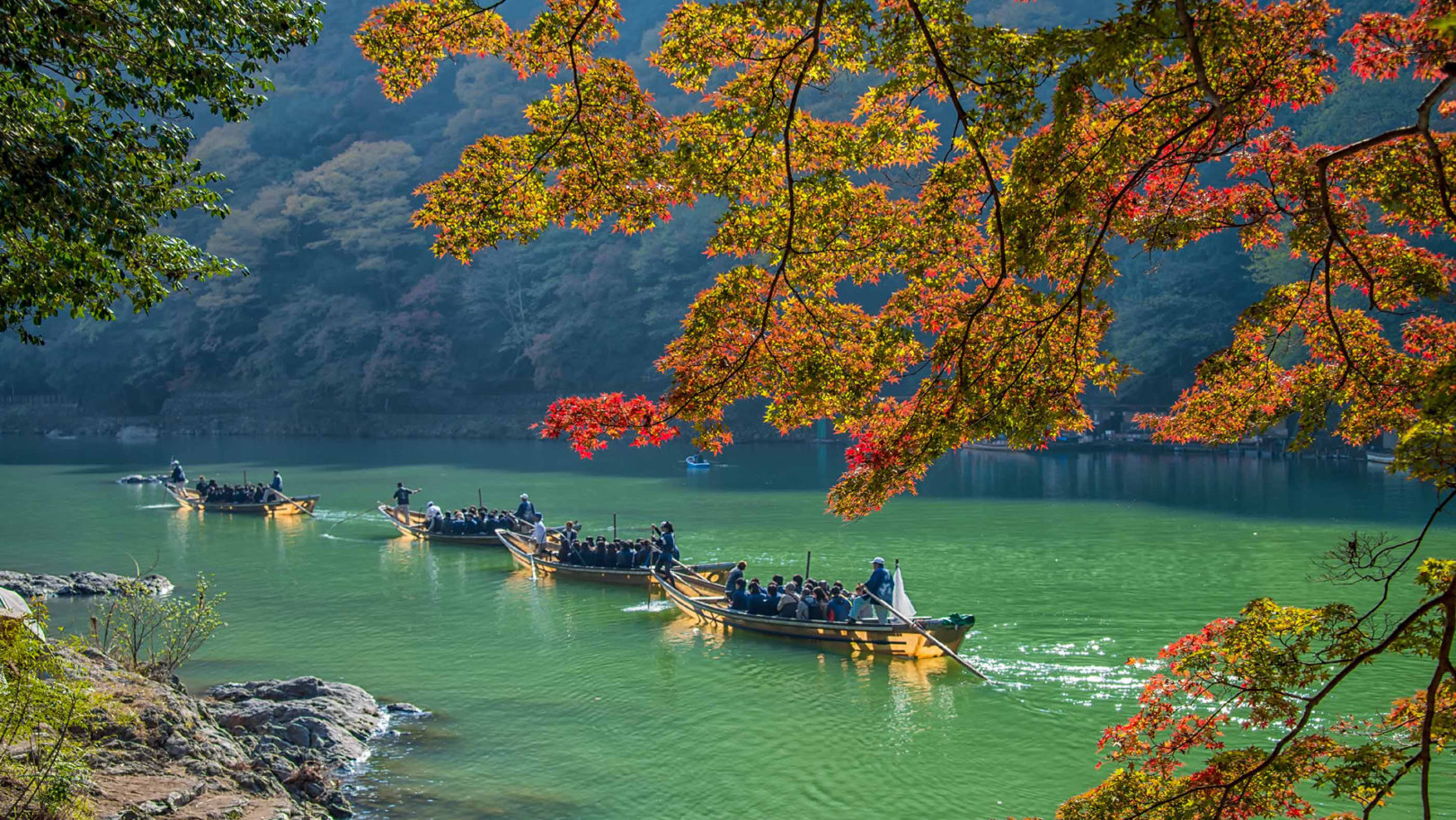
Best time to visit Japan
This really depends on what you’re looking for on a solo trip to Japan. Spring (March to May) is a beautiful time for seeing the famous sakura (cherry blossoms) and is peak time for travellers, though the weather is notoriously unpredictable, ranging from 4-18°C. Travelling during October and November is a great time to witness Japan’s koyo (autumn colours), with maple leaves turning fiery red and temperatures between 10-21°C.
Summers are hot and humid (usually 21-32°C) and can be a better time for hiking at higher altitudes in the southern region of Kansai on Honshu island, while being shaded under canopies of leafy green trees. Winter, meanwhile, is cold, coming in at sometimes sub-zero temperatures, with snow settling and Japan becoming a skiing destination – especially on Hokkaido.
Japan travel itineraries
Between the ancient Buddhist temples and futuristic cities, the mountainous hiking ranges and wistful winding rivers, there’s a lot that can be seen and experienced in Japan. Flash Pack’s Another World trip takes care of everything. Culture, cuisine and adventurous activities are all packed into the 12-day itinerary, with space for socialising and solitude between the unique activities. Land in Osaka to check out Japan’s foodie city (home to Wagyu beef) before learning about the history of Hiroshima and visiting a floating shrine on the little island of Miyajima. From here, there’ll be a temple stay and onsen bathing in Kyoto with a tea ceremony and geisha-led dinner, plus a ramen masterclass, sumo wrestling, sake, sushi and more throughout the rest of the days.
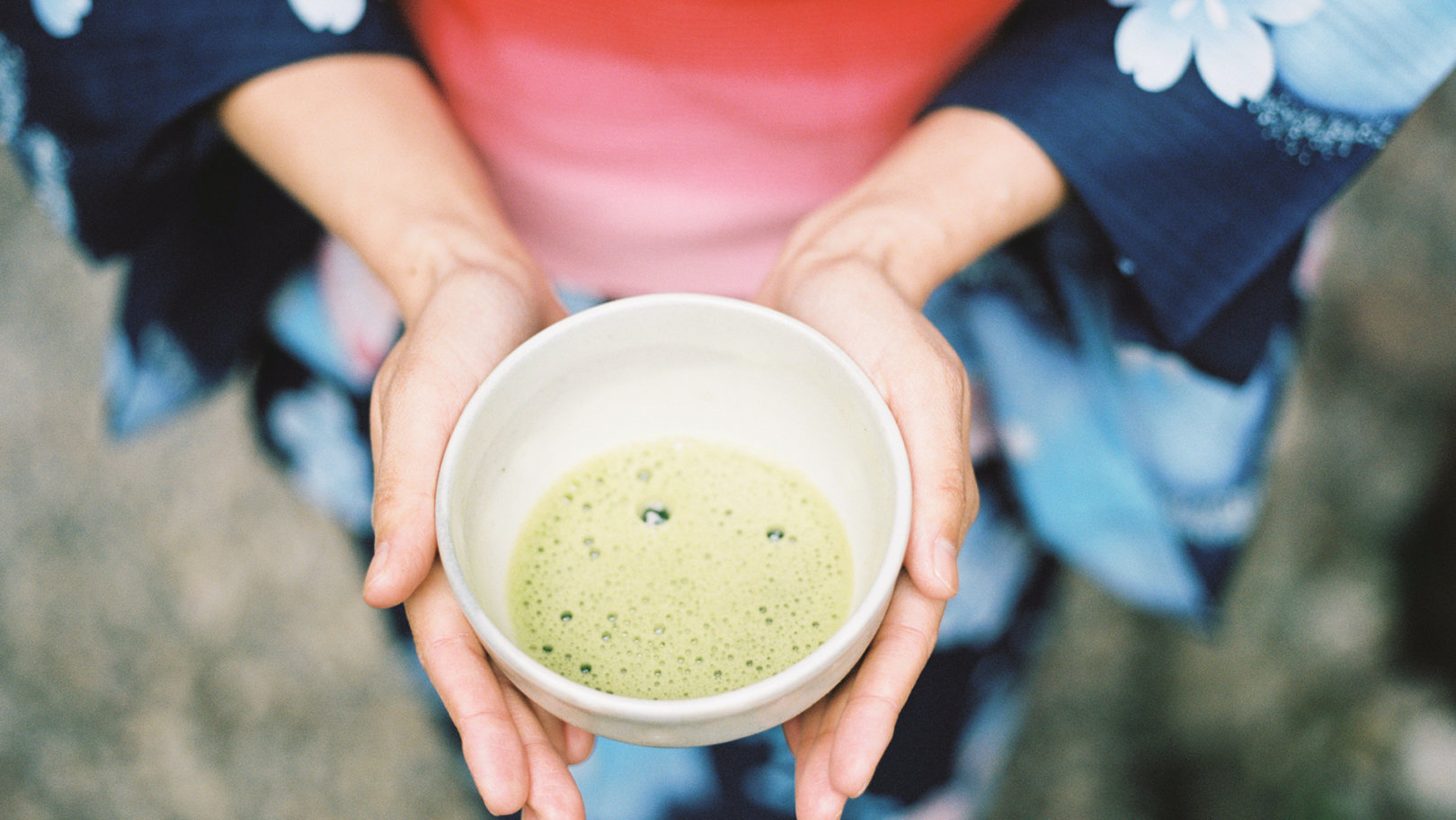
What to pack for solo travel in Japan
In short, it’s best to pack light for solo travel in Japan. Hopping on and off high-speed trains – which often have limited luggage storage – means a backpack or lightweight soft-shell wheeled suitcase is best. Inside, pack clothing to cover all climatic bases: lots of light layers, cotton tees, long-sleeved tops, light jackets and thin jumpers. Japan is still a cash-based economy in some places, so it’s good to have some Japanese yen handy, along with an extra credit card.
Solo travel advice for Japan
Japan, with its vast array of spiritual sites and serene nature trails, is the perfect place to regroup and reflect as a solo traveller. In almost every city you’ll find traditional landscaped gardens once used by Japan’s lords and leaders as a prime location for dwelling and dreaming.
Away from the hubbub, make a beeline for remote temples, forest-trailed mountains or islands peppered with picturesque rivers and castles. Ethereal waterfalls, vast flower-filled parks and striking alpine routes are also yours to explore. And, of course, Japan has a long tradition of onsen hot-spring bathing that is the very definition of solitude, often connected to classic Japanese ryokan (inns).
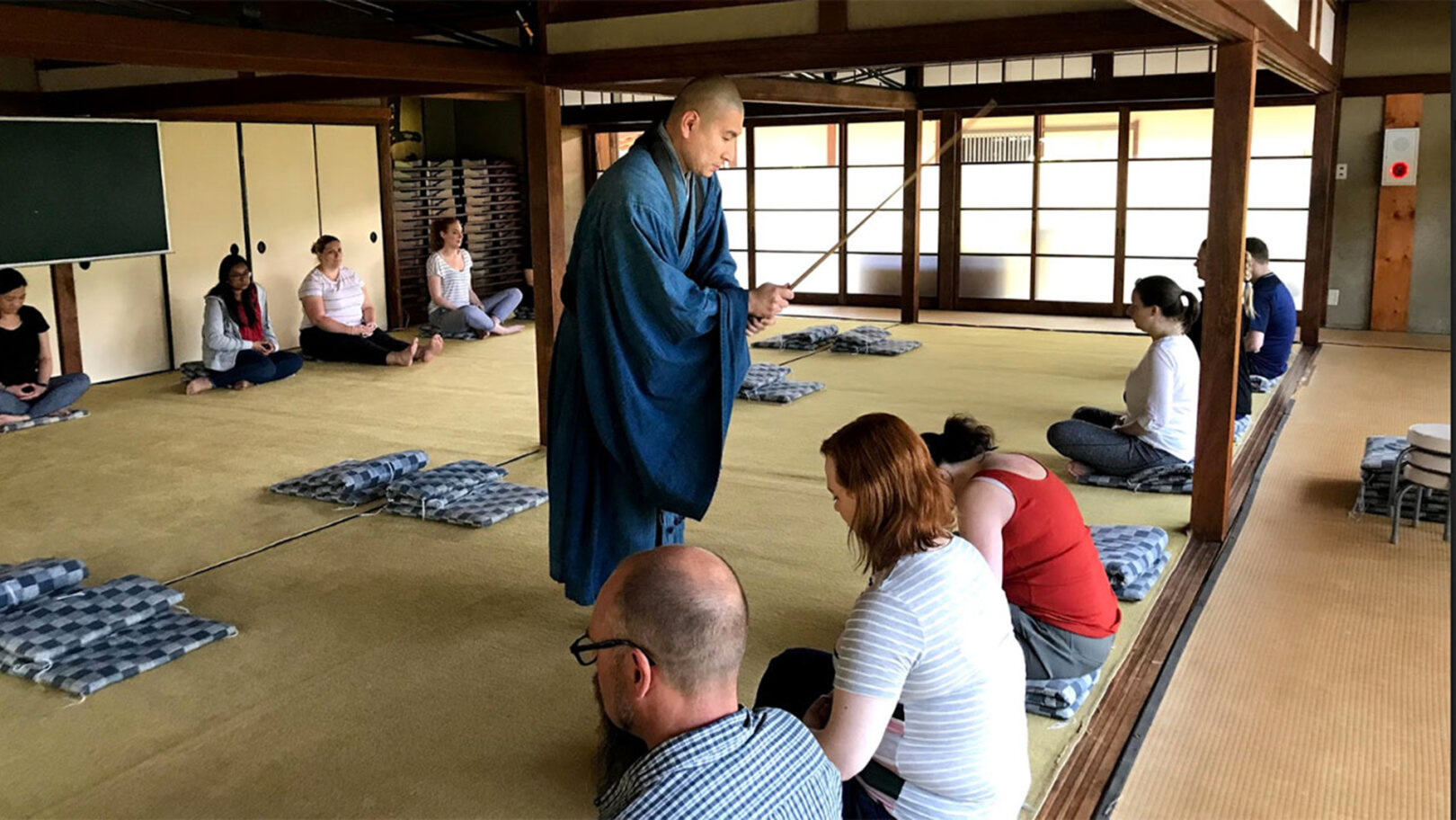
Is it safe to travel solo in Japan?
Thousands of visitors experience solo travel to Japan every year and most trips are trouble-free. However, do check out the Foreign and Commonwealth Office (UK), the Department of State Travel Advisories (US) or your country’s local government guidelines for the latest advice before travelling. Once there, follow local advice and be aware of your surroundings and belongings at all times.
Solo travel in Japan is all the more enticing thanks to its excellent safety record and low crime rates. Travelling solo is particularly normalised and catered for, including women-only spaces in spas or train carriages. For extra peace of mind, it’s always worth considering travelling with a group of other solo travellers.
Ready for your next adventure? Try group solo travel to Japan with Flash Pack – designed exclusively for people in their 30s and 40s, seeking the independence of solo travel within the safety of a group.
A cool 98% of Flashpackers arrive solo to join our group adventures. So, you’ll be in good company – whether a first time solo traveller or a seasoned pro looking for like-minded new friends.
Images: Flash Pack






